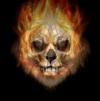

| Online: | |
| Visits: | |
| Stories: |

| Story Views | |
| Now: | |
| Last Hour: | |
| Last 24 Hours: | |
| Total: | |
Ketamine As An Emergency Anaesthetic: An Overview
Anaesthetics is a tricky business, monitoring the patients vital signs and maintaining their airway is a balancing act that requires knowledge of anatomy and physiology, as well as a huge amount of knowledge about the anaesthetic drugs available, and how they work in relation to muscle relaxants that are given to soften muscles allowing surgeons access without the twitching and reflex movements that would otherwise occur.
It would be stupid to think that in a collapse scenario, where for whatever reason society has broken down, that nobody is ever going to need an anaesthetic, of course they are, and for that reason knowing where the nearest doctor is, or better still having one in your group would be everyone’s number one choice. Sadly, not everyone is going to know where a doctor is, and few will be fortunate enough to have one in their group.
This article is not about you doing brain surgery on the kitchen table, or digging bullets out of someone’s gut when a hunting trip goes wrong. It is simply to inform you of the uses, mode of action and doses of ketamine.
Prior to 1963 Phencyclidine, PCP, was used as an anaesthetic agent. It was quite unpredictable and caused the majority of patients to awake with psychotic hallucinations after their operation. The drug was, like many, adapted to street use and was widely known as Angel Dust. In 1963 ketamine, which is chemically related to PCP was first synthesised. It has more reliable onset and duration times and although it can still cause hallucinations post-operatively they are far less severe. It is these properties that make it a desired street drug where it goes under various names such as Dorothy, special K, cat Valium, super acid and green, I am sure there are many more.
Ketamine is the only anaesthetic drug that has analgesic, hypnotic and amnesic effects. It produces feelings of disassociation with events and surroundings. It also maintains the muscle tone of the airway, elevates blood pressure and heart rate and has a predictable onset and duration time. These features make it an excellent battlefield medicine and it is carried by all service medics as part of their standard kit. When given in sub-anaesthetic doses it provides excellent analgesia, comparable to that of high dose morphine but without the respiratory depression and decreased heart rates associated with opioid analgesics.
It is often the case that a sub-anaesthetic dose of ketamine is sufficient to facilitate a minor procedure, such as removal of shallow foreign body, suturing, or approximating a non-compound fracture. It is excellent for use in dressings application or changes and is a strong enough analgesic that cleaning contaminated or necrotic wounds would be far more comfortable for the patient, and less harrowing for the medic carrying out the procedure.
Ketamine is packaged in a clear glass multi dose vial in strengths of either 50 or 100mg/kg and hospital grade ketamine is usually in liquid form though in some parts of the world it comes as a powder for reconstitution with sterile water. It can be given iv but many doctors favour the intramuscular route, and this should definitely be the route used by anyone who is not used to the drug on a regular basis as it provides a slower onset and longer duration of action.
In a hospital environment, with full back up anaesthetists would give a dose of between 5-10 mg/kg to induce anaesthesia, giving another 3-5mg/kg approximately every 20 minutes to maintain the anaesthesia.
Sub-anaesthetic doses of 3-5 mg/kg would be given every 15 minutes in order to provide good analgesia levels for lesser procedures. In both these cases, using the intramuscular route of administration the onset time would be 15-25 minutes.
As mentioned patients may experience hallucinations on waking from ketamine. There is some evidence that asking the patients to think of non-exciting things such as walking through a field of flowers, or watching a sunset, when coupled with a quiet area during their recovery from the drug reduces the hallucinations by a considerable degree. I have had only one patient that has hallucinated during their recovery out of many dozens of ketamine anaesthetics I have assisted with.
Ketamine is a very useful and versatile drug but is should not be used in patients who are known to have ischaemic heart disease as the increased heart rate caused by the drug can overload the heart and it is no use at all for removing foreign bodies from the eyes as it causes nystigmus, involuntary eye movements. It does cause an increase in salivation but this wears off quickly as the patient recovers. Care is always taken to make sure that the patients head is not in a position where the tongue could fall back and block the airway, and that secretions can drain freely.
The detail provided in this article is for information only and is not a suggestion or recommendation that anyone but qualified medical practitioners with full hospital back up should use ketamine for anaesthetic or analgesic purposes.
Take care
Liz



